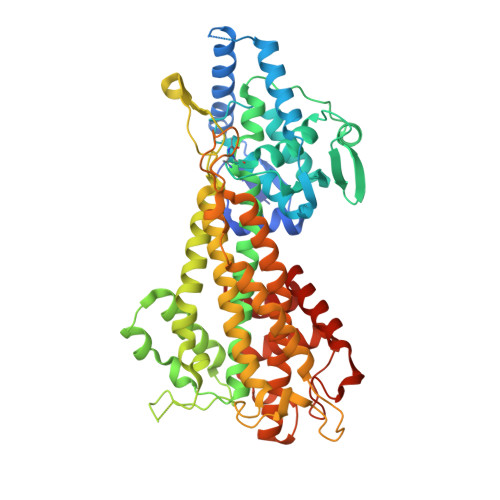Discovery of Two Cyanobacterial Phenylalanine Ammonia Lyases: Kinetic and Structural Characterization.
Moffitt, M.C., Louie, G.V., Bowman, M.E., Pence, J., Noel, J.P., Moore, B.S.(2007) Biochemistry 46: 1004-1012
- PubMed: 17240984
- DOI: https://doi.org/10.1021/bi061774g
- Primary Citation of Related Structures:
2NYF, 2NYN - PubMed Abstract:
Phenylalanine ammonia lyase (PAL) catalyzes the deamination of phenylalanine to cinnamate and ammonia. While PALs are common in terrestrial plants where they catalyze the first committed step in the formation of phenylpropanoids, only a few prokaryotic PALs have been identified to date. Here we describe for the first time PALs from cyanobacteria, in particular, Anabaena variabilis ATCC 29413 and Nostoc punctiforme ATCC 29133, identified by screening the genome sequences of these organisms for members of the aromatic amino acid ammonia lyase family. Both PAL genes associate with secondary metabolite biosynthetic gene clusters as observed for other eubacterial PAL genes. In comparison to eukaryotic homologues, the cyanobacterial PALs are 20% smaller in size but share similar substrate selectivity and kinetic activity toward L-phenylalanine over L-tyrosine. Structure elucidation by protein X-ray crystallography confirmed that the two cyanobacterial PALs are similar in tertiary and quatenary structure to plant and yeast PALs as well as the mechanistically related histidine ammonia lyases.
- Scripps Institution of Oceanography and Skaggs School of Pharmacy and Pharmaceutical Sciences, University of California at San Diego, La Jolla, California 92093, USA.
Organizational Affiliation:

















